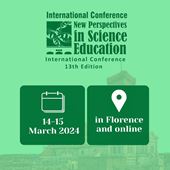The Level of Scientific Literacy Among Primary School Pupils: Preliminary Results
Petr Kovarik, J. E. Purkyne University Faculty of Education Department of Preschool and Primary Education Pasteurova 1 400 96 Usti nad Labem Czech Republic (Czech Republic)
Romana Adamkova, J. E. Purkyne University Faculty of Education Department of Preschool and Primary Education Pasteurova 1 400 96 Usti nad Labem Czech Republic (Czech Republic)
Milan Kubiatko, J.E. Purkyne University Faculty of Education Department of Preschool and Primary Education Pasteurova 1 400 96 Usti nad Labem (Czech Republic)
Abstract
Scientific literacy is a term which is often mentioned in the context of contemporary problems and in the current society in general. Scientific literacy is a term used since the 1950s to describe the scientific knowledge of broad public [1]; although almost 75 years have passed, its definition is still not unanimous; the term lacks a single universal definition. The main aim of the research was to determine the level of scientific literacy among primary school pupils and also to determine differences in the level of scientific literacy with regard to the relevant grade and gender. The total of 112 pupils from 3 primary schools selected from the schools available participated in the research. The research tool was designed from published TIMSS 2019 tasks aimed at the scientific literacy with 4-grade pupils [2] The test tool consisted of 12 questions diversified according to their difficulty to 2 – 5, similarly as in the TIMSS test. I used 3 tasks in every category of difficulty. ). In order to fulfil the research aims, the inductive statistical methods were used, specifically the Student’s t-test for independent selections. If we focus on the results of the scientific literacy test from the age perspective (or the relevant grade), we concluded that 9-grade pupils achieved statistically much better results in all test areas and there were no statistically significant differences in the success rates of boys and girls.
This study was supported the Grant Agency of the J. E. Purkyne University in Usti nad Labem grant SGS no. UJEP-SGS-2022-43-003-2.
Key words: primary school pupils; Quantitative approach; scientific literacy; test
References
1] DeBoer, G. E. (2000). Scientific literacy: Another look at its historical and co ntemporary meanings and its relationship to science education reform. Journal of Research in Science Teaching: The Official Journal of the National Association for Research in Science Teaching, 37(6), 582-601. https://doi.org/10.1002/1098-2736(200008)37:63.0.co;2-l
[2] Tomasek, et al. (2021). Inspiration for timss skill development: Math and science tasks. Praha: CSI.
 New Perspectives in Science Education
New Perspectives in Science Education





























